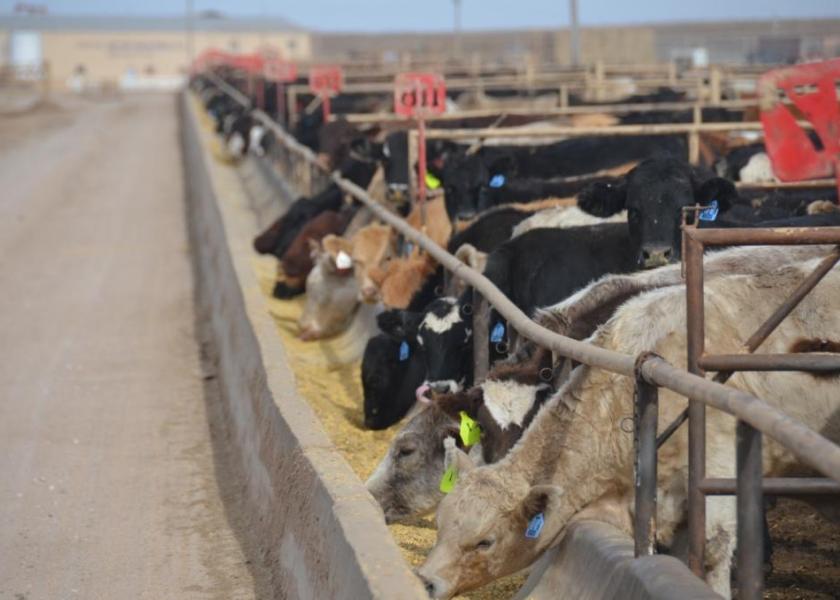Cash Fed Cattle Sharply Lower, Feeders Steady to Lower

Cash fed cattle continued a downward spiral driven by losses in CME Live cattle futures. Cash cattle in the South traded at $100 per cwt., $2 to $3 lower than last week. Northern cattle traded at $102 to $103 live, and $165 to $168 dressed, $3 to $8 lower. Early in the week northern cattle traded at $105 live and $170 dressed.
Softer cash prices were the result of sharply lower futures prices. CME Oct Live cattle closed down the $3 daily limit to close below $95. As a result, trading limits expand to $4.50 for next Monday’s session. Feeder cattle finished $1.025 to $1.425 lower through the January contract. For the week, October live cattle futures plunged $4.05 and posted a new contract low. Bears carry strong momentum into next week’s trade.
On Wednesday, Tyson Fresh Meats reported its Finney County beef plant will not be fully operational until January, but some processing is occurring in undamaged areas of the plant. That will leave the industry coping with a 5% slaughter capacity loss over the next four months with heavy supplies of ready cattle.
At auctions, Agricultural Marketing Service reporters called the trend for steers and heifers $3 lower to $2 higher, “with the North Central region being on the positive side of neutral. Weakness in the Southern Plains and the Southeast regions this week were widespread at auctions as demand is waning ahead of the fall calf runs.”
Still, AMS reporters said, “the competition for feeder cattle is high despite the abundant negativity currently. Feeder cattle producers have been hesitant to offer yearlings for sale as they would like to see a higher market but with an abundance of grass, the need to pull cattle off and ship them to town has diminished.”
Cattle Slaughter under federal inspection is estimated at 565,000 for the week, 79,000 less than last week and 6,000 less than a year ago. If realized, the estimated harvest on Saturday of 101,000 would be the third largest Saturday kill in 10 years! The Choice beef cutout closed $4.46 lower at $227.31, while the Select closed at $201.94 per cwt., $10.33 lower.







